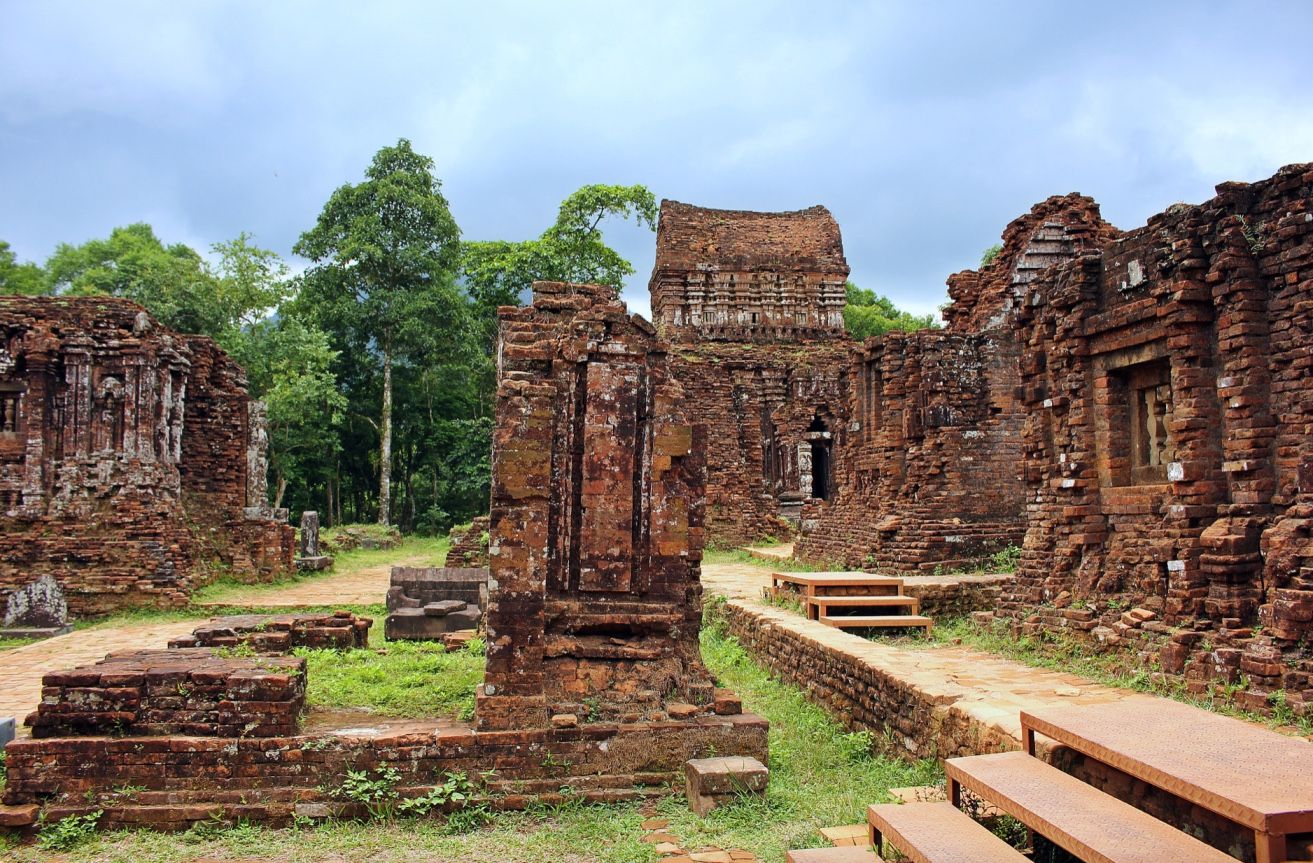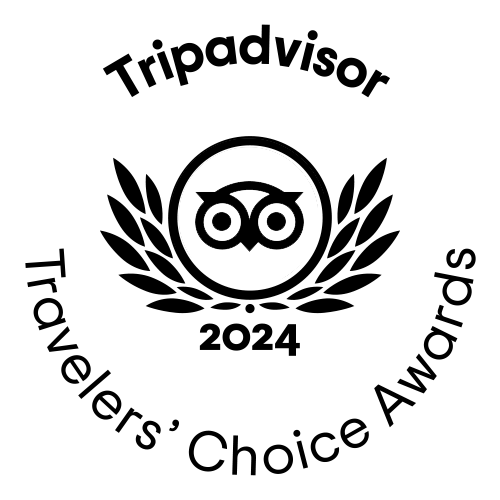How To Visit My Son Sanctuary (Vietnam’s Chams remains)
Visiting My Son Sanctuary reveals the layered history of Vietnam’s ancient Champa remains. Once the spiritual and political capital of the ancient Cham Kingdom, this complex lies just an hour from Hoi An or Danang. It offers a powerful glimpse into a civilization that thrived from the 4th to 15th centuries.
It is definitely worth to explore over 70 Hindu temples, each telling a story through intricate carvings and timeworn architecture. Although US bombings during the Vietnam War destroyed much of the site in 1969, conservation teams restored many key areas. Since UNESCO granted My Son World Heritage status in 1999, restoration has made the site more accessible and worth the visit.
Wander through jungle-clad ruins, capture stunning photos, and connect with Vietnam’s ancient history. Entrance tickets are affordable, and both guided tours and self-guided visits work well. If you’re in Hoi An or Da Nang, don’t skip this half-day adventure.
Where Is My Son Sanctuary and How to Get There
Before planning your visit, take a moment to consider how you want to get there. Several transportation options are available, and your choice can shape the entire experience. Whether you prefer a guided tour, a motorbike ride through scenic countryside, or a private car for comfort, each route adds something unique to your visit. Many travelers combine a visit to My Son with a relaxing afternoon back in Hoi An or a detour from Da Nang.
My Son Shuttle from Hoi An & Da Nang
For travelers in Hoi An or Da Nang looking to explore My Son without a private car or motorbike, shared shuttle buses offer a budget-friendly option. These daily shuttles run between both cities and the ancient ruins, giving you the cheaper options to explore independently while skipping the hassle of driving yourself.
Make sure to book your bus ticket in advance as they fill up fast, especially during high season.
Here’s a quick look at the typical bus schedule to My Son (as of April 2025):
Hoi An to My Son Sanctuary
- 8:00 AM: Depart from Hoi An old town
- 9:15 AM: Arrive at My Son
- 12:00 PM: Leave My Son
- 1:00–1:30 PM: Return to Hoi An
Da Nang to My Son Sanctuary
- 8:00 AM: Depart from Da Nang
- 9:15 AM: Arrive at My Son
- 12:00 PM: Depart My Son
- 1:30–2:00 PM | Return to Da Nang
Private Car or Taxi to My Son Sanctuary
This is the best option if traveling with kids or simply you prefer to travel more comfortable and not joining a group tours.
While not the cheapest (expect to pay around 1.000.000 VND/ $40 USD), this option gives you more flexibility. You can stop at Marble Mountains, make a detour to Da Nang, or even head north toward Hue (100km from Danang)—all on your schedule. The ride from Hoi An to My Son takes just 45 minutes.
Arrange a car easily through your hotel or directly with a local Grab driver (Grab is a ride hailing app works exactly like Uber)—just make sure to agree on the price beforehand. Once at the sanctuary, hire a private guide for about 500,000 VND (USD20) to learn about the history and the site. It worth the money you pay.
Motorbike Rental to My Son Sanctuary from Hoi An
Riding a motorbike in Vietnam offers a true sense of local experience, but it’s not for everyone, do it, only if you are able to ride a motorbike. The traffic in Hoi An and Central Vietnam can feel chaotic, and without proper insurance, any accident could lead to serious issues. That’s why we only recommend this option for experienced riders who understand the risks and already have coverage.
That said, if you’re confident on riding a motorbike, renting a scooter to reach My Son Sanctuary can turn into one of the most scenic rides of your trip. Ride through lush rice paddies, cross rustic bridges, and wind through jungle roads. Want to try street food or capture a breathtaking view? Just pull over—no tour schedule to follow.
The route is clearly marked, and riding early lets you arrive before the crowds. You’ll have the ancient ruins almost to yourself.
Scooter rentals in Hoi An typically cost around 200,000 VND, (USD8) and even with fuel, it’s the most budget-friendly way to explore this must-visit site in Vietnam. And to rent a motorbike, rent one from your hotel, or anywhere in the old town of Hoi An (You are required to leave your passport).
A Brief History of My Son Sanctuary, Vietnam
Travel back to the 4th century, when the powerful Champa Kingdom began to flourish along the central coast of Vietnam. As this influential maritime empire expanded, King Bhadravarman initiated the construction of the first temples at My Son Sanctuary, dedicating them primarily to the Hindu god Shiva, revered by the Cham people as the guardian of their kings.
Over the next few centuries, My Son transformed into a thriving spiritual center. Between the 7th and 13th centuries, the sanctuary reached its golden age, with more than 70 impressive structures built to honor Hindu deities like Shiva, Vishnu, and Brahma. Unlike the grand stone temples of Angkor Wat in Cambodia or Borobudur in Indonesia, the Cham builders used red bricks and a mysterious technique—still puzzling modern engineers—to create seamless, mortar-free structures that have stood the test of time.
However, this era of peace and prosperity didn’t last. By the 15th century, the expanding Vietnamese kingdoms overpowered the Cham, leading to the fall of the Champa Kingdom. As the Cham influence faded, they abandoned My Son, and the surrounding jungle slowly reclaimed the sanctuary, cloaking it in silence and mystery for hundreds of years.
In 1898, French archaeologist Henri Parmentier rediscovered the ruins, and by the 1930s, restoration efforts had already begun. But once again, conflict struck. During the Vietnam War, the Viet Cong used the dense jungle around My Son as a strategic base. This led to devastating American carpet bombing campaigns that destroyed large parts of the complex. You can still spot bomb craters scattered across the site.
Today, visiting My Son offers not only a glimpse into Vietnam’s ancient past but also a powerful reminder of resilience and cultural heritage. Whether you’re traveling from Hoi An or Da Nang, this worthwhile destination promises rich history, beautiful surroundings, and a story that continues to inspire.

What to See at My Son Sanctuary, Vietnam
When you arrive at My Son Sanctuary, it becomes instantly clear what draws travelers here — ancient ruins, jungle surroundings, and an atmosphere steeped in mystery and history. While time and conflict have taken their toll, over 70 structures still stand or partially survive, offering a fascinating look into Vietnam’s Champa heritage..
The Cham builders didn’t scatter the temples randomly. Instead, they organized them into distinct groups (or blocks) based on function, era, and architectural style. Each group reveals something unique about the religious and cultural life of the Champa Kingdom.
Here’s a quick breakdown of what you’ll find as you explore ruins of My son:
Group A:
Fortunately, restoration efforts — led by a collaborative team of archaeologists — have begun breathing life back into this historically rich section. The most striking structure here is the A1 Temple, once a towering 28-meter masterpiece from the 10th century. Unlike other temples in the complex, it featured two main doors facing east and west, and six smaller shrines around it dedicated to the directional gods (Dikpalakas). Although the temple no longer stands in full form, its remaining base offers a clear picture of its original scale and significance.
Group B – C – D: The best of My Son Sanctuary
Finally, visit Group D, where smaller temples like D1 and D2 now serve as indoor galleries. These covered spaces display a range of artifacts and sculptures recovered from the surrounding ruins, adding more depth to your understanding of Vietnam’s ancient history.
Group E – F – G: Hidden Corners of My Son
Although Groups E, F, and G may not showcase the grandeur of the main temple clusters, they offer something uniquely rewarding: peaceful corners to explore without the crowds. Tucked away from the main thoroughfare, these groups provide a more intimate and reflective experience at My Son Sanctuary.
Next, wander into Group F, which sits adjacent to Group E. This smaller cluster once played a vital role in religious worship, especially in honoring various Hindu deities. The F1 Temple, although currently under reconstruction, still offers glimpses into its past through scattered carvings and worn reliefs that hint at the craftsmanship of the Champa civilization.
Together, these clusters add depth to your visit and remind you that My Son Sanctuary isn’t just about grandeur—it’s also about the quiet beauty hidden in its lesser-known corners. So take your time, explore these peaceful ruins, and enjoy one of Vietnam’s most historic hidden gems.
Group H & K
If you’re exploring My Son Sanctuary from Hoi An or Da Nang, don’t skip these quiet corners—they might just be the unexpected highlight of your day.
The My Son and Champa Museum (Look Into Vietnam’s Ancient Past)
In short, don’t skip the museum—it’s a compact but valuable part of your My Son travel guide experience.
Apsara Cham Folk Art Performance
It is worth to spend an extra time and catch one of the beautiful Cham Apsara dance performances held at My Son Sanctuary—a must-see addition to your experience. These dance shows bring Cham history and culture to life through graceful movements, rhythmic music, and traditional costumes bursting with color.
Dancers use every step and gesture to share stories passed down through generations, offering a rare and authentic glimpse into the soul of this ancient civilization. The music, performed with traditional instruments, adds another layer of depth and emotion to each performance.
- 9:30 AM – 10:30 AM
- 11:00 AM – 12:00 PM

Join the Katê Festival
Every year during the 7th lunar month, the Cham community comes together to celebrate the Katê Festival—one of their most significant cultural and spiritual events. Rather than focusing solely on the past, this celebration breathes life into My Son Sanctuary, turning it into a stage for living tradition.
FAQ: Things to know before visiting My Son Sanctuary
Ticket price & Opening hours
As of April 2025, entry to My Son Sanctuary costs 150,000 VND for adults and 30,000 VND for children aged 5 to 15. Children under 5 can join along for free.
The sanctuary opens its gates daily from 6:00 am to 5:00 pm, giving you plenty of time to explore the ancient ruins at your own comfort. If you want to beat the crowds and the heat, it’s best to arrive as early as possible.
When's the best time to visit
Regardless of the season, arriving early in the morning is the best time of the day to visit the site. Not only will you skip the blazing midday sun, but you’ll also dodge the large tour groups that usually flood in around 10:00 am. Even better, the soft early light casts a golden hue over the ruins, creating a peaceful, almost mystical atmosphere—perfect for taking photos and enjoying the sanctuary in relative quiet.
Visiting My Son with Kids
If you’re exploring Vietnam with kids, My Son Sanctuary works surprisingly well as a family-friendly site.
To make things easier for parents, several stalls within the complex sell snacks and drinks. All in all, My Son offers a nice blend of history, space to roam, and convenience for families on the move.
Tips for visiting my Son Sanctuary
Dress Respectfully
While My Son doesn’t enforce strict temple dress codes like other Southeast Asian sites such as Angkor wat temples, it’s still respectful to cover your shoulders and knees. Also, wear comfy walking shoes—you’ll cover a lot of ground. And don’t forget a lightweight raincoat, especially if you’re visiting during the wetter months.
Stay hydrated
Yes, it gets hot, so drink plenty of water. You can buy bottled water at the entrance of the My Son, or take a reusable water bottle.
Hire a Local Tour Guide
To really connect with the history and meaning behind what you’re seeing , consider hiring a local tour guide. Not only will they bring the site to life with stories and context, but you’ll also support the local community.




